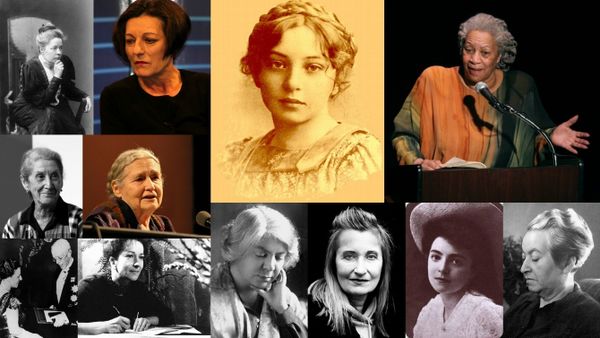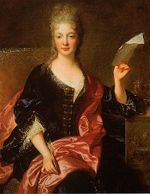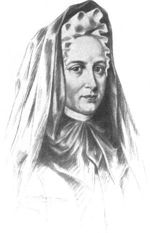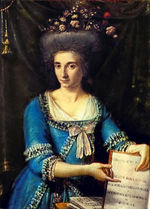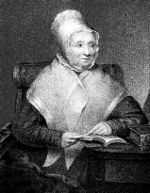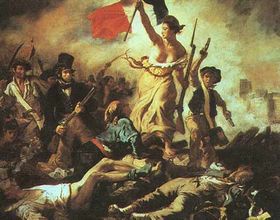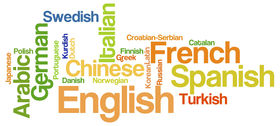Category:Women Authorship--1700s
|
Born in Paris into a family of musicians and master instrument-makers, French Elisabeth-Claude Jacquet de La Guerre made the transition from a child prodigy to one of the few well-known female composers of her time. Among her compositions are two oratorios dealing with two of the most beloved female characters of Second Temple Judaism, Esther and Judith. In the same years another woman composer reached success and acclaim in Vienna, Austria. Maria Margherita Grimani's oratorios on New Testament subjects were the first compositions by a woman to be performed at the court theater. French mystic Jeanne-Marie Guyon published her major commentary to the Bible in 1713-15. Swedish poet Maria Gustava Gyllenstierna was one of the most learned women of her epoch and an accomplished author of religious and secular poetry, including five hundred or so (unpublished) sonnets about the life and death of Jesus (1730-36). In 1713-52 she translated the works of Josephus into Swedish, from the French edition by Arnauld d'Andilly. Plays based on Second Temple Jewish subjects were composed in mid-18th century in Italy by Francesca Manzoni Giusti and in England by Mary Latter and Mary Eleanor Bowes Strathmore. In England, in the early 1760s, poetess Mary Collyer translated the poetry of Salomon Gessner's Der Tod Abels and Friedrich Gottlieb Klopstock's Der Messias. In Rome, in 1772, Maria Rosa Coccia, age 13, composed the oratorio Daniello, which was performed at the Chiesa Nuova, in spite of the tradition that women were not allowed to attend such events. Three years later she would become the first female graduate from the Academy of Santa Cecilia. In a time in which women had no access to the academia, Hannah Adams learned Latin and Greek from the divinity students who boarded with her father in Medfield, MA. An independent scholar and largely self-taught, she became a prolific writer, authoring texts in American history, religion and Jewish history. She made literature her profession, unique among women of the time. Among her earliest works were An Alphabetical Compendium of the Various Sects (1784) and View of Religious Opinions (1784) in which she presented the major world religions with special attention and devotion to Christian Origins. @2015 Gabriele Boccaccini, University of Michigan
|
|
Pages in category "Women Authorship--1700s"
The following 14 pages are in this category, out of 14 total.
1
- Esther (1708 Jacquet de La Guerre), oratorio
- Judith (1708 Jacquet de La Guerre), oratorio
- Wårs Herres och Frälsares Jesu Christi alldraheligaste pijons historia (The Most Holy Martyrdom of Our Lord and Savior Jesus Christ / 1710 Brenner), poetry
- (+) Flavii Josephi Judiske historia (1713-52 Arnauld d'Andilly / Gyllenstierna), book (Swedish ed.)
- La decollazione di San Giovanni Battista (1715 Grimani), oratorio
- L'Ester (1733 Manzoni Giusti), play
- The Death of Abel = Der Tod Abels (1762 @1758 Gessner / Collyer), poetry (English ed.)
- The Siege of Jerusalem by Titus Vespasian (1763 Latter), play
- The Siege of Jerusalem (1769 Bowes Strathmore), play
- Daniello (Daniel / 1772 Coccia / @1731 Zeno), oratorio
- An Alphabetical Compendium of the Various Sects (1784 Adams), book
- View of Religious Opinions (1784 Adams), book
